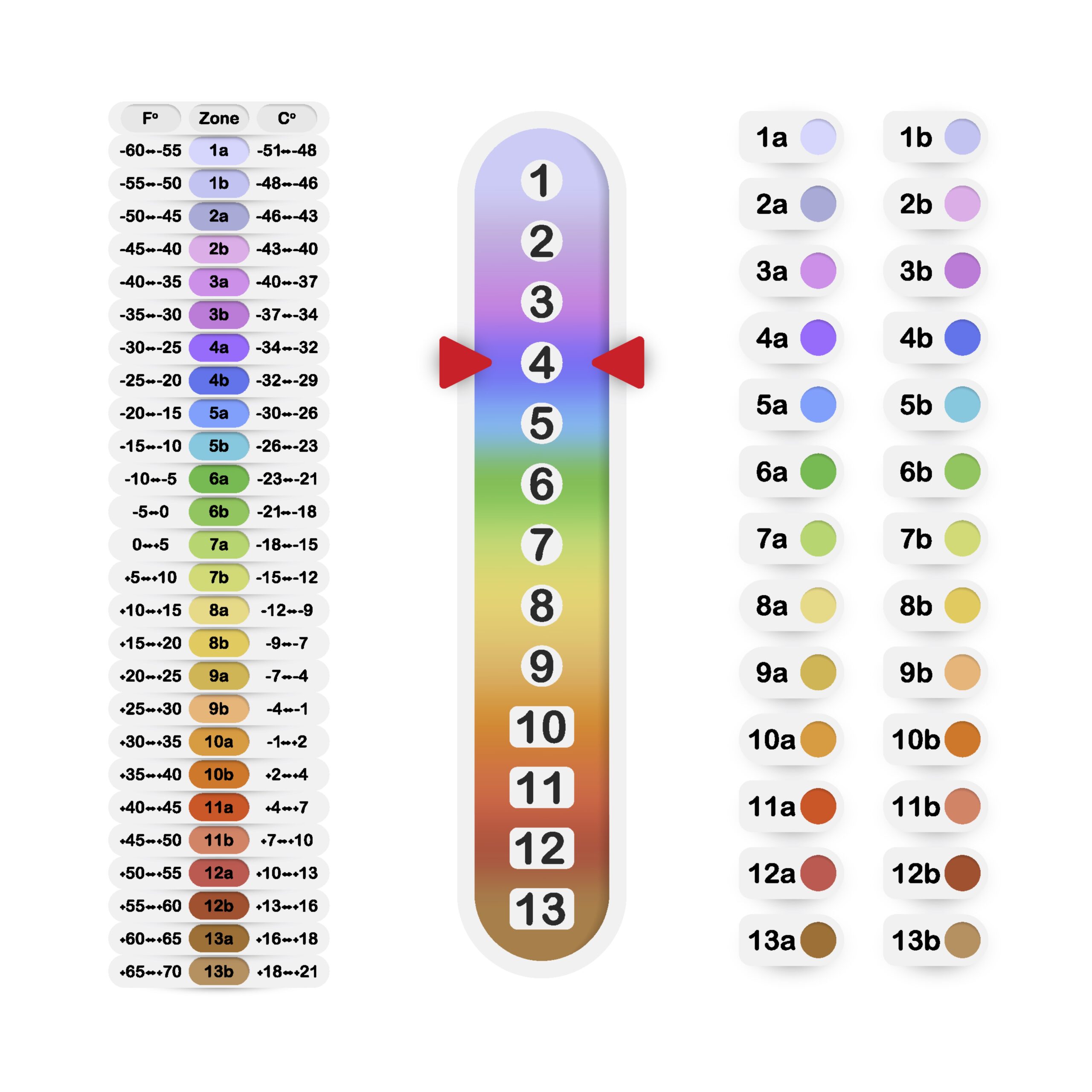As you browse our shop, you may notice our frequent mentions of plant hardiness for all our wildlife-preferred trees and shrubs. But what does this actually mean?
All plants have their comfort zone—a specific climate where they grow optimally. Each plant likes to grow in its preferred climate and weather conditions. Planting plants in climates that are too hot or too cold will stress them and could strain their growth. That’s why you don’t see a lot of palm trees in Alaska!
The best way to plant your wildlife orchard is to choose plants, trees, and shrubs that will thrive in your climate. This way, your orchard will grow faster, healthier, and will soon be the ideal environment for deer and other wildlife to choose as their habitat.

What Are the Hardiness Zones?
The United States has been divided into 13 hardiness zones, ranging from 1 to 13. The coldest zone is 1, and the warmest is 13, which is determined by taking the minimum ten-year average temperature in each zone (ranging from -60°F to 70°F). Alaska is on the cold end in Zone 1, while Zone 13 can be found in Puerto Rico and parts of Hawaii.
Zones are classified based on 10°F differences. Within each zone, there can be sub-divisions, which are defined with the letters ‘a’ and ‘b’. These sub-divisions designate 5°F differences within the hardiness zone. This helps growers, landowners, and gardeners to better gauge the particularities of their region and climate area.
What Do Hardiness Zones Tell Us?
Hardiness zones tell us how cold minimum temperatures can be.
A tree that likes warmer temperatures like a pecan tree will suffer in northern Michigan and Illinois. Likewise, a Mexican Oak Tree will thrive in Texas, California, New Mexico, or Florida but struggle in Maine and Iowa.
Hardiness zones help landowners decide which trees and shrubs they should plant with the best chances of survival and success.
How Accurate are Hardiness Zones?
Hardiness zones are revised to reflect changing climate patterns. However, while hardiness zones are relatively accurate for flat areas like the East Coast, they are trickier to evaluate when it comes to the western part of the US because of the influence of the Rockies and other mountains.
Mountains create microclimates of elevation and differentiation in precipitation. These vary immensely in the West. Likewise, the combination of closeness to the ocean and the presence of mountains can create climate standards that deviate from the norm.
Areas in Colorado, Utah, Nebraska, and Wyoming have varying hardiness zones that can shift depending on the effect of rainfall, snowfall, and elevation.
Don’t Forget About Microclimates
Microclimates are local climate conditions that affect smaller areas.
These can be highly topical; you may even have a few different microclimates in a single plot of land! A substantial piece of land that has slopes, elevated canopy, or water elements like ponds or a river can have different microclimates within it. For example, a river will create a more humid climate that could favor trees that like such growing conditions.
Similarly, landowners should choose different trees for the top of a slope than the bottom part, again because of the different microclimates.
Consider Your Area’s Hardiness Zone before Choosing Your Plants
All landowners creating a wildlife orchard want it to thrive. They do not want to spend money to see their trees wither. The key to choosing trees, shrubs, and plants that match your land’s growing conditions is to check your area’s hardiness zone.
Wildtree can help you make the most out of your budget instead of wasting money on the wrong types of plants. Once you have established the general climate around your land, call us at 346-707-6023 or email us at [email protected]. It will be our pleasure to help you understand the particularities of your land and find the best plants for your garden or landscaping project!


